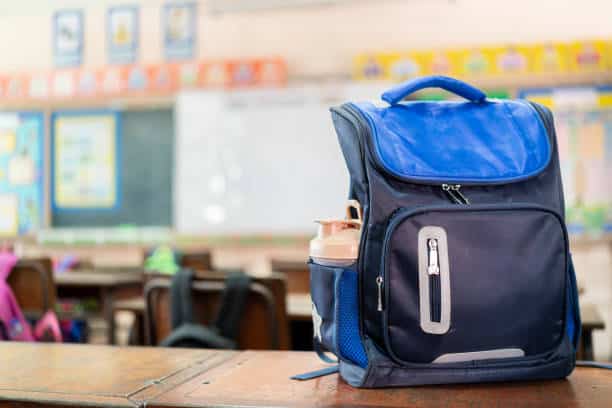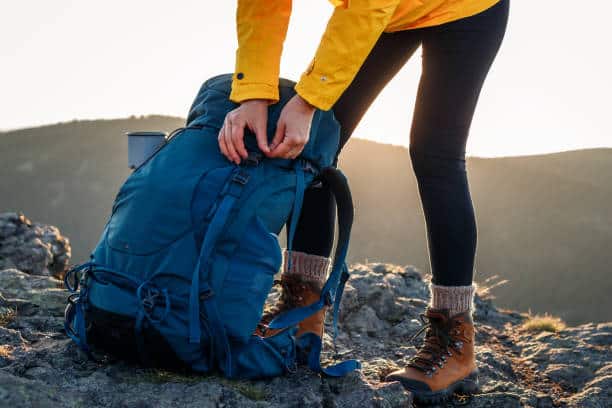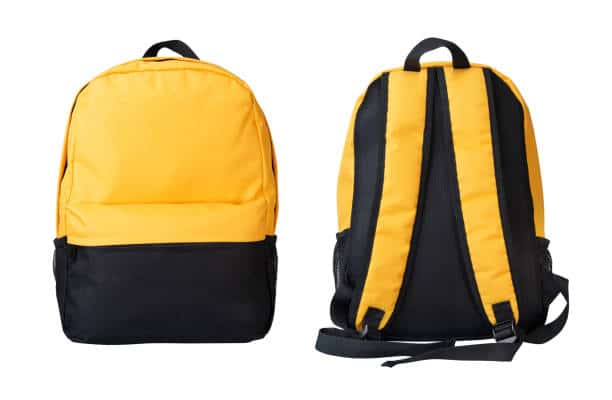
Enabling avid riders to effortlessly transport their belongings, learning how to properly secure a backpack to a bike rack is a valuable skill for any cyclist. Whether commuting to work, running errands, or embarking on a cycling adventure, having a secure method for transporting a backpack can make the difference between a smooth ride and a frustrating one. Fortunately, with the right technique and equipment, attaching a backpack to a bike rack can be a simple and effective endeavor. In this how-to guide, we will walk through the step-by-step process of securing a backpack to a bike rack, ensuring that it stays in place during your ride.
Key Takeaways:
- Choose the right bike rack: Make sure your bike rack is compatible with the type of backpack you have and can securely hold it in place.
- Secure the backpack: Use bungee cords or straps to secure the backpack to the bike rack and prevent it from shifting or falling off during the ride.
- Distribute weight evenly: Place the heaviest items at the bottom of the backpack and distribute the weight evenly to prevent the bike from becoming unbalanced.
- Test for stability: Before riding, give the bike a gentle shake to ensure the backpack is securely attached and won’t interfere with your ride.
- Adjust for visibility: Make sure the backpack doesn’t obstruct your view of the road or any lights or reflectors on your bike.
- Consider weather protection: If you expect rain or other inclement weather, consider using a waterproof cover or placing the backpack inside a waterproof bag to protect its contents.
- Double-check before riding: Always double-check that the backpack is securely attached before starting your ride to prevent any accidents or damage to your belongings.
Factors to Consider Before Mounting a Backpack
Obviously, before you place your backpack onto a bike rack, there are several important factors to consider. Recognizing these factors will ensure that your backpack is properly secured and will not interfere with your ride.
Backpack Size and Volume
An important factor to consider before mounting your backpack on a bike rack is the size and volume of the backpack. It is essential that the backpack fits securely onto the rack without obstructing your view or interfering with your ability to ride safely. Additionally, you must ensure that the backpack’s volume does not exceed the capacity of the bike rack.

Rack Compatibility and Load Capacity
Consider the compatibility of your backpack with the bike rack. It is crucial to check if the rack is designed to accommodate your specific backpack and if it has the necessary load capacity to support the weight of your items. Additionally, ensure that the backpack does not exceed the load capacity specified by the manufacturer of the bike rack.
Size and volume, load capacity, and compatibility are all essential factors to consider before mounting your backpack on a bike rack. Ensuring that these aspects align will guarantee a secure and safe transportation of your belongings.
Weather Conditions and Protective Measures
To protect your backpack and its contents from various weather conditions, consider using protective measures such as waterproof covers or protective shells. These protective measures will help shield your backpack from rain, snow, or extreme sun exposure, ensuring that your belongings remain safe and dry during your ride.
Capacity, protective measures, and weather conditions are all important aspects to consider when mounting your backpack on a bike rack. Taking these factors into account will help safeguard your belongings during various outdoor conditions.

How-to Guide: Mounting Your Backpack on a Bike Rack
Despite its potential challenges, mounting a backpack on a bike rack is a practical and efficient way to transport your belongings without weighing yourself down. With the right technique, you can ensure a secure and balanced load, allowing you to enjoy a smooth ride without any hassle.
Step-by-Step Instructions for Securing the Backpack
With this step-by-step guide, you can efficiently secure your backpack to your bike rack. Ensure a secure and balanced load by following these instructions:
| Step 1 | Place your backpack on the bike rack with the bottom sitting securely |
| Step 2 | Use bungee cords or straps to tightly secure the backpack to the rack |
Tips for Even Weight Distribution
For a smooth and stable ride, it’s important to distribute the weight of your backpack evenly across the bike rack. Here are some useful tips to help you achieve this:
- Make sure the heaviest items are placed at the bottom of the backpack
- Use both bungee cords or straps to secure the backpack in place
Assume that a well-balanced load will contribute to a more comfortable and safer ride, minimizing the risk of accidents or discomfort.

Additional Information
To ensure the safety and stability of your backpack on the bike rack, it’s important to follow the proper techniques when securing and distributing the weight. Be mindful of the placement of your items and use reliable straps or bungee cords to prevent any shifting during your ride. Assume that a well-balanced load will help you maintain control and stability while cycling, allowing you to enjoy your journey with peace of mind.
Advanced Tips and Tricks
For a more advanced approach to attaching your backpack to your bike rack, consider the following tips and tricks:
- Use bungee cords or straps to secure the backpack tightly to the bike rack, minimizing movement and potential for damage.
- Consider using a waterproof cover for your backpack to protect it from the elements during your ride.
Optimizing Aerodynamics and Minimizing Drag
Drag is a common concern when attaching a backpack to a bike rack. To minimize drag and optimize aerodynamics, consider using a streamlined backpack with minimal exterior pockets and attachments. Additionally, positioning the backpack closer to the bike frame can help reduce wind resistance, ultimately improving your riding experience.

Using Additional Accessories for Enhanced Stability
Drag can also affect stability when carrying a backpack on a bike rack. To enhance stability, consider using additional accessories such as pannier racks or stabilizing straps. These accessories can help distribute the weight more evenly and prevent the backpack from shifting during your ride.
The use of pannier racks and stabilizing straps can greatly improve the stability of your backpack on the bike rack, providing a more secure and balanced riding experience. These accessories also allow for greater versatility in carrying larger or heavier loads while cycling.
Maintenance and Safety Checks
Keep your bike rack and backpack in top condition with regular maintenance and safety checks. This will ensure a secure and safe ride for both your gear and yourself.
Routine Inspection of Mounting Points
To guarantee the secure mounting of your backpack on the bike rack, it’s important to routinely inspect the mounting points. Check for any signs of wear and tear, such as loose bolts or weakened straps. Make sure all components are securely fastened and in good condition before every ride. An additional precaution is to test the stability and weight capacity of the bike rack by attaching the backpack and giving it a gentle shake to ensure it’s safely secured.

Regular Cleaning and Care for Longevity
Routine cleaning and care for your bike rack and backpack are essential for their longevity. Regularly clean the mounting points and straps to remove any dirt or debris that could compromise their integrity. Additionally, consider applying lubricant to moving parts to reduce wear and tear. A well-maintained bike rack and backpack will not only last longer but also provide a safer and more enjoyable riding experience.
How to Put Backpack on Bike Rack
With this in mind, it is important to ensure that the backpack is securely fastened to the bike rack before starting your ride. Make sure the backpack is not hanging over the sides or obstructing any view. Utilize the straps and clips provided on the bike rack to secure the backpack in place. Double check the stability of the backpack before hitting the road to prevent it from falling off and causing potential hazards. By following these simple steps, you can safely and efficiently carry your backpack on your bike rack, allowing for a comfortable and worry-free ride.

FAQ – How to Put a Backpack on Bike Rack
Q: What type of bike rack is suitable for carrying a backpack?
A: A rear bike rack with a platform is ideal for securely attaching a backpack.
Q: How do I attach the backpack to the bike rack?
A: Place the backpack on the rack platform and ensure it is centered and balanced before securing it with bungee cords or straps.
Q: Can any backpack be attached to a bike rack?
A: Backpacks with additional straps or hooks specifically designed for bike commuting are recommended for secure attachment to a bike rack.
Q: How do I secure the backpack to prevent it from shifting or falling off during the ride?
A: Use multiple bungee cords or tight-fitting straps to secure the backpack to the bike rack, minimizing movement and ensuring stability throughout the ride.
Q: Are there weight limits for carrying a backpack on a bike rack?
A: It is essential to check the weight capacity of the bike rack and ensure that the combined weight of the backpack and any other items does not exceed this limit to avoid damage or instability.
Q: Can I still access items in the backpack while it’s on the bike rack?
A: It is advisable to pack items that will not be needed during the ride in the backpack, as accessing the contents while in transit can be challenging and may compromise safety.
Q: What are the potential risks of carrying a backpack on a bike rack?
A: Risks include the potential for the backpack to become loose or unbalanced during the ride, affecting the rider’s stability and control of the bike. It is essential to regularly check the attachment and stability of the backpack throughout the journey.